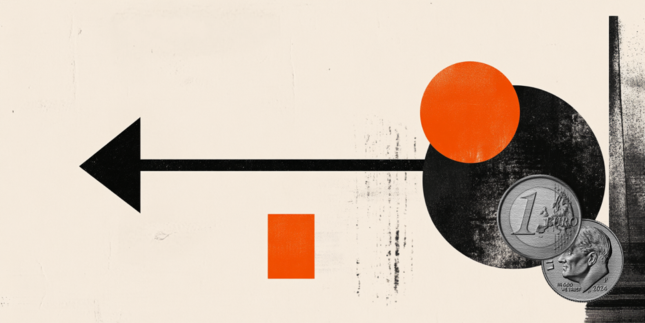The Reserve Bank of Australia (RBA) will announce its next monetary policy decision on Tuesday, February 7 at 03:30 GMT and as we get closer to the release time, here are the forecasts by the economists and researchers of ten major banks regarding the upcoming central bank's decision.
RBA is expected to hike rates by 25 basis points to 3.35%. Updated macro forecasts will come at this week’s meeting. The bank then releases its Statement on Monetary Policy Friday. This report will contain updated forecasts.
ANZ
“Another upgrade to inflation forecasts in the RBA’s February Statement on Monetary Policy will provide further support for an increase in the cash rate. We expect the RBA to lift its end-2023 trimmed mean inflation forecast from 3.8% to 4.2%. Importantly, we think the February forecasts will include a return to 3% YoY inflation, which is the top of the target band, in Q2 2025. While a 25 bps hike is the most likely option, we expect the Board to consider a 50 bps hike. Early signs of a slowdown in consumer spending and a softening in business conditions should be enough though for the RBA that demand is responding to higher rates, allowing it to stick to 25 bps.”
ING
“RBA is expected to hike rates by 25 bps. Considering the much higher-than-expected inflation readings over the past two months, we have increased our peak RBA cash rate forecast to 4.1% from 3.6%, assuming that there are two further months of 25 bps hikes ahead. We see a slight softening of the labour and housing markets, but this is not likely to be decisive for future rate decisions. There will be a subsequent statement on monetary policy on 10 February and this will likely provide more clarity on direction.”
Standard Chartered
“We expect the RBA to hike the cash rate by another 25 bps to 3.35% from 3.10% previously. This would be the fourth consecutive 25 bps rate hike since October. In aggregate, the central bank would have hiked by 325 bps since it started its rate-hiking cycle back in May. On balance, we see the RBA hiking again in February, followed by another 15 bps in March. We see still-elevated inflation as a risk to further hikes.”
HSBC
“We expect the RBA to deliver a 25 bps hike. Hawkish comments hinting at further hikes could open some upside for the AUD over the near term.”
TDS
“Accelerating services inflation locks in a 25 bps hike. We forecast a follow-up 25 bps hike in Mar taking terminal to 3.6% but the statement may open the door to pausing after next week. Official forecasts will be released 10th Feb, but the statement will provide a flavour of what to expect. Wage f/c's to be revised higher but the inflation trajectory to be left broadly unchanged.”
NAB
“We expect the Board will deliver another 25 bps increase. Important for the outlook will be updated forecasts, previewed in the post-meeting statement and detailed in Friday’s SoMP on 10 February. We expect the forecasts to continue to draw a path to a soft landing, but the characterisation of the risks will be key to determine whether the RBA continues to be confident that it can return inflation to target without pushing rates deep into restrictive territory. We see the cash rate increasing by 25 bps in February and March to a peak of 3.6%.”
Crédit Agricole
“We expect the RBA to raise its cash rate by 25 bps to 3.35%, which would not have much impact on the AUD as the market is about 75% priced for such a hike. Softening household consumption and employment growth leave the market a little hesitant to fully price in a 25 bps rate hike. This data also leaves investors on the lookout for any signs from the RBA of a pause in its tightening cycle. With the market still pricing in an RBA terminal rate of between 3.60%.”
Danske Bank
“We look for a 25 bps hike.”
SocGen
“We expect the RBA to increase the cash rate target from 3.10% to 3.35%, marking its fourth consecutive ‘baby-step’ hike of 25 bps since October last year. The RBA policymakers are clearly more focused on the slowdown of economic growth, although macroeconomic indicators (especially inflation and employment) do not support a termination of the rate-hike cycle at this juncture. We maintain our base scenario that the RBA will end the tightening cycle at a terminal policy rate of 3.85% in April.”
Citibank
“RBA will likely raise its policy rate for the 9th consecutive time by 25 bps, taking the cash rate to 3.35%. With inflation well above the target band at 7.8%, the real policy rate remains negative and likely to remain there until around mid-2024. The RBA is also likely to signal further interest rate increases are likely and the risks to this week’s meeting also remain tilted hawkish with a non-trivial likelihood of a 50 bps increase. We now expect the RBA’s terminal cash rate view to rise from 3.35% in Q1 to 3.85% in Q2 while also lifting their inflation forecast for Australia with year-ended headline inflation for 2023 now forecast to be 1.4pp higher to 5.4% and underlying inflation also 1.3pp higher at 5.0%. We expect the RBA to lift the inflation forecasts to June 2024, ie, inflation to remain higher for longer in the February SMP due on Friday. This brings into focus the March and April RBA meetings that leave at least two more 25 bps hikes on the table to take the cash rate to 3.85%.”
Information on these pages contains forward-looking statements that involve risks and uncertainties. Markets and instruments profiled on this page are for informational purposes only and should not in any way come across as a recommendation to buy or sell in these assets. You should do your own thorough research before making any investment decisions. FXStreet does not in any way guarantee that this information is free from mistakes, errors, or material misstatements. It also does not guarantee that this information is of a timely nature. Investing in Open Markets involves a great deal of risk, including the loss of all or a portion of your investment, as well as emotional distress. All risks, losses and costs associated with investing, including total loss of principal, are your responsibility. The views and opinions expressed in this article are those of the authors and do not necessarily reflect the official policy or position of FXStreet nor its advertisers. The author will not be held responsible for information that is found at the end of links posted on this page.
If not otherwise explicitly mentioned in the body of the article, at the time of writing, the author has no position in any stock mentioned in this article and no business relationship with any company mentioned. The author has not received compensation for writing this article, other than from FXStreet.
FXStreet and the author do not provide personalized recommendations. The author makes no representations as to the accuracy, completeness, or suitability of this information. FXStreet and the author will not be liable for any errors, omissions or any losses, injuries or damages arising from this information and its display or use. Errors and omissions excepted.
The author and FXStreet are not registered investment advisors and nothing in this article is intended to be investment advice.
Recommended content
Editors’ Picks

EUR/USD drops below 1.0450 as USD gathers strength
EUR/USD stays on the back foot and trades below 1.0450 on Wednesday. The cautious market stance helps the US Dollar (USD) stay resilient against its rivals and weighs on the pair as markets wait for the Federal Reserve to publish the minutes of the January policy meeting.

Gold climbs to new all-time high near $2,950
Gold retreats slightly from the all-time high it touched at $2,947 but manages to stay above $2,930 on Wednesday. The benchmark 10-year US Treasury bond yield clings to modest gains above 4.55%, limiting XAU/USD's upside.

GBP/USD retreats below 1.2600 despite strong UK inflation data
GBP/USD struggles to hold its ground and trades in the red below 1.2600 on Wednesday. Earlier in the day, the data from the UK showed that the annual CPI inflation climbed to 3% in January from 2.5% in December. Market focus shifts to FOMC Minutes.

Maker Price Forecast: MKR generates highest daily revenue of $10 million
Maker (MKR) price extends its gains by 6%, trading around $1,189 on Wednesday after rallying more than 20% so far this week. Artemis data shows that MKR generated $10 million in revenue on February 10, the new yearly high in daily revenue.

Money market outlook 2025: Trends and dynamics in the Eurozone, US, and UK
We delve into the world of money market funds. Distinct dynamics are at play in the US, eurozone, and UK. In the US, repo rates are more attractive, and bills are expected to appreciate. It's also worth noting that the Fed might cut rates more than anticipated, similar to the UK. In the eurozone, unsecured rates remain elevated.

The Best Brokers of the Year
SPONSORED Explore top-quality choices worldwide and locally. Compare key features like spreads, leverage, and platforms. Find the right broker for your needs, whether trading CFDs, Forex pairs like EUR/USD, or commodities like Gold.